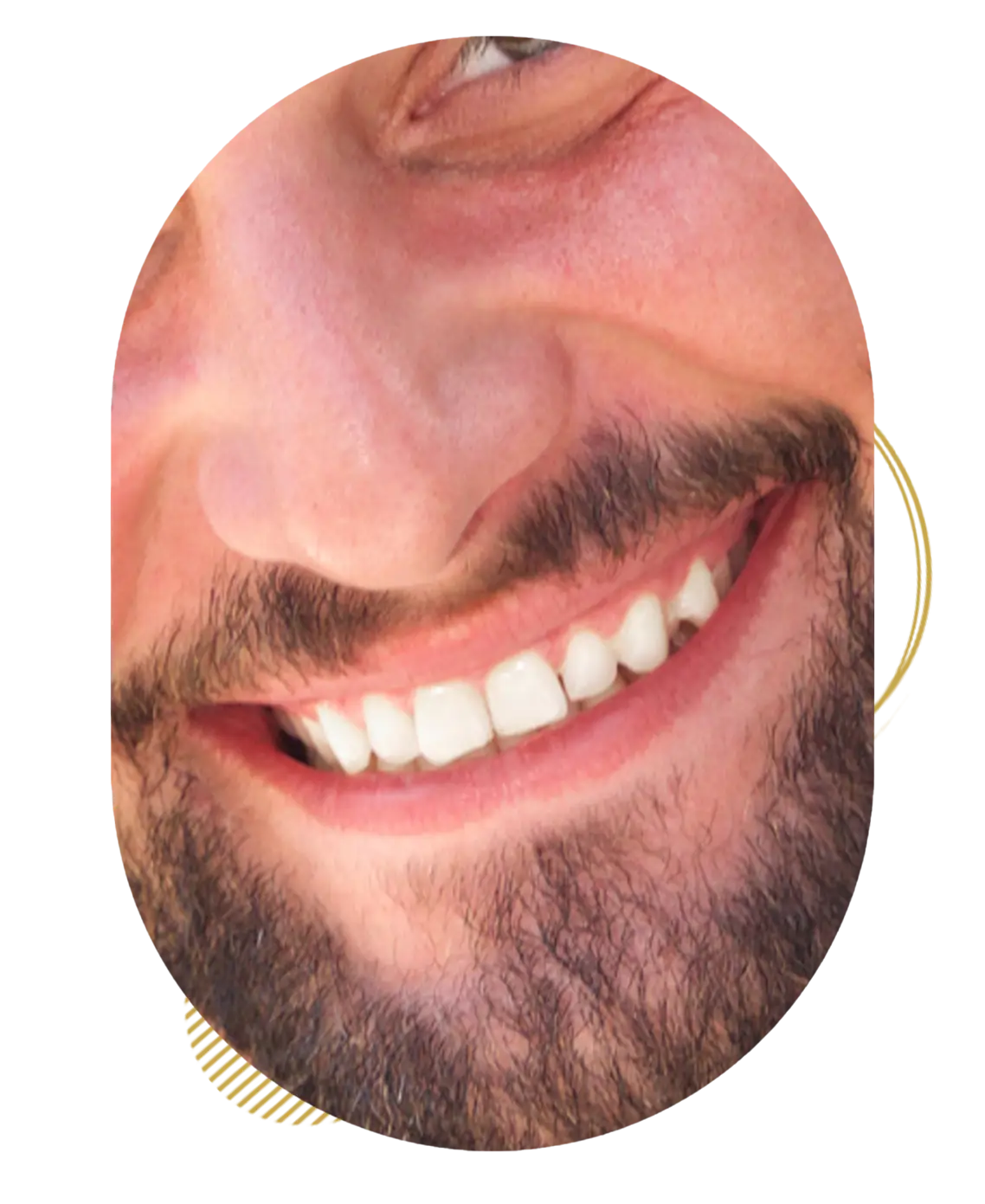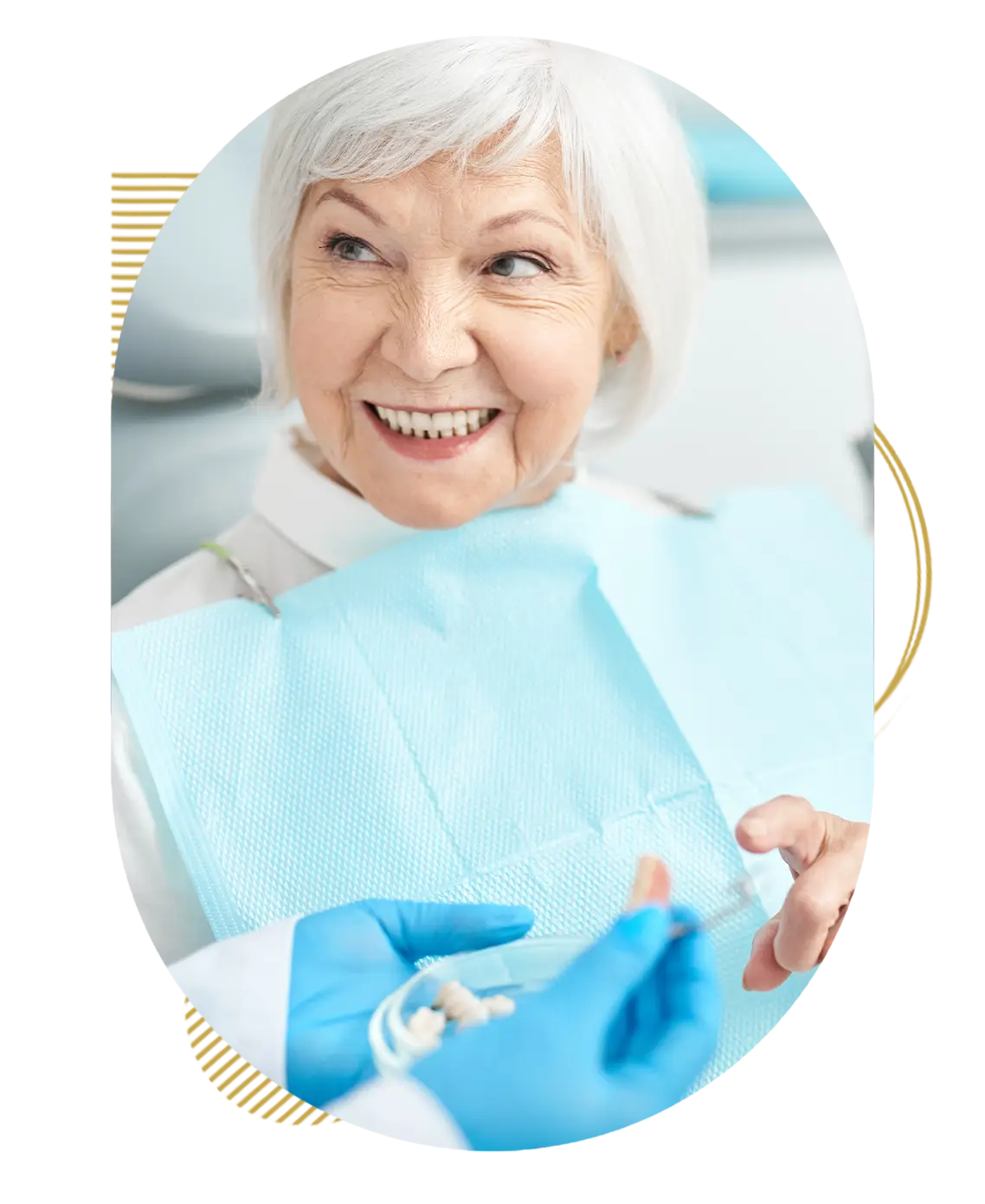Care
General dentistry
Examination and cleaning
Oral examination
Everyone should have a dental check-up at regular intervals, even if they maintain healthy oral hygiene. The purpose of these examinations is to:
- Prevent dental problems
- Diagnose the state of the mouth
- Propose an appropriate treatment plan, if necessary
What’s more, certain conditions and lifestyle habits can affect oral health, such as smoking, alcohol consumption, certain illnesses and medication.
The dental examination includes an assessment of :
- Teeth
- Gums
- Language
- Soft tissue under the tongue
- From the palace
- From inside the cheeks
Your dentist will check for gum infections, cavities, worn fillings and any other unusual signs. Dentures, if any, are also examined.
Your dentist will also find out about your state of health and lifestyle by means of a medical questionnaire.
The questionnaire covers such topics as :
- General health
- Previous hospitalizations
- Taking medication and drug allergies
- Tobacco and alcohol consumption and other risk factors
- Dental history
Your dentist may need to take X-rays to establish a diagnosis. These are safe, as you are only exposed to very small amounts of radiation in targeted areas. Your dentist also uses the necessary means to protect you, including a protective lead apron.
Frequency
The frequency of examinations depends on the needs of each patient and several factors, including :
- The state of oral health
- Regular daily dental care, including brushing and flossing
- General health and lifestyle habits
The Ordre des dentistes recommends a visit every six months. During the examination, the dentist may modify the frequency of visits, if necessary.
(Reference: ma bouche en santé from the Ordre des dentistes du Québec)
Dental cleaning
Cleaning includes scaling (to remove plaque and tartar build-up) and prophylaxis (polishing teeth with a slightly abrasive paste to remove surface stains).

Operative dentistry

Tooth decay is a disease of the hard tissues of the tooth that progresses inward, forming a cavity and leading to the localized and progressive destruction of :
- Enamel: the outer layer of the tooth
- Dentin: the layer beneath the enamel
- The pulp: the heart of the tooth, containing nerves and blood vessels
Your dentist will remove the part of the tooth affected by tooth decay, and replace it with a filling (composite or amalgam).
Prevention is the best way to avoid cavities, and early diagnosis makes intervention easier and more conservative. So, by practising good oral hygiene and adopting healthy eating habits, you can protect your teeth!
Periodontics
Periodontics is a branch of dentistry that focuses specifically on the gums and supporting bone of the teeth. Gum disease (or periodontal disease) occurs when these are affected.
The two main periodontal diseases are :
Gingivitis
This is the most common form. It is characterized by inflammation of the gums, which become red, swollen and bleed easily. Fortunately, gingivitis is reversible with good oral hygiene and regular professional care.
Periodontitis
If left untreated, gingivitis can develop into periodontitis. This is more serious, as it affects the tissues that support the teeth. Periodontitis can lead to loosening, mobility and even loss of teeth.

Endodontics

Root canal treatment, also known as endodontic treatment, is sometimes the only way of preserving a tooth rather than extracting it.
At the center of the tooth is the pulp. It’s made up of blood vessels, nerves and connective tissue. The pulp can become inflamed and/or infected in the presence of deep decay, or when a tooth has undergone repeated fillings, or following trauma (impact). In such cases, root canal therapy is essential.
Root canal treatment consists of :
- Remove inflamed or infected nerve
- Clean and disinfect canal(s)
- Plug and seal channel(s)
Once the root canal has been completed, all that remains is to restore the tooth with a traditional restoration (filling) or a crown, depending on the condition of the tooth.
Crowns and bridges
Crown
A crown is an artificial tooth that completely covers a damaged or weakened natural tooth to restore and protect it. It is designed to resemble a natural tooth in shape, size and color.
When do I need a crown?
-
- Teeth
- Gums
- Language
- Soft tissue under the tongue
- From the palace
- From inside the cheeks
Your dentist will check for gum infections, cavities, worn fillings and any other unusual signs. Dentures, if any, are also examined.
Your dentist will also find out about your state of health and lifestyle through a medical questionnaire.
Bridge
A fixed bridge is a permanent restoration that replaces one or more missing teeth.
It is composed of:
Pontic tooth
This is the artificial tooth that replaces the missing tooth. There may be one or more artificial teeth.
Abutment teeth
These are the natural teeth on either side of the edentulous space, on which the bridge will rest. These teeth are covered with crowns to provide support.

Dental prosthesis

Complete removable prosthesis
A complete denture, also called a denture, is a removable dental appliance that replaces all the teeth in a dental arch (either the upper jaw, lower jaw or both) when natural teeth are missing.
Removable partial denture
A removable partial denture is a dental appliance designed to replace one or more missing teeth on a dental arch, while relying on the remaining natural teeth for stability. It is removable, which means that the patient can easily take it out and put it back in for maintenance and cleaning.
Dental extraction
Extraction is the removal of a tooth from the mouth.
Here are some examples where extraction may be necessary:
Advanced decay: When decay has destroyed a large part of the tooth, it is impossible to restore it with a filling or crown.
Periodontal disease : When periodontal disease is advanced, it leads to destruction of the bone supporting the teeth. As a result, teeth become loose and painful.
Lack of space: Wisdom teeth that don’t have enough space to emerge properly can cause pain, infection, cysts and damage to adjacent teeth. Removing them prevents these complications.
It’s important to note that tooth extraction is generally a last resort. Your dentist will explore all other possible treatment options before recommending extraction.

